These days, Maryland Avenue is cherished for a mix of things–shops, great bookstores, restaurants, and sightseeing the exquisitely designed old mansions there. Back in the late seventeen and eighteen hundreds, Maryland Avenue was not as grown-up and was mostly praised for its residences–many of which still stand today. It’s because we presently celebrate all the splendor and charm of what Maryland Avenue once was that we are devoting a series to Maryland Avenue history, starting with the great Hammond-Harwood House.
To learn about this old, stately gem, we visited Allison Titman, Assistant Director/Curator there, on a Friday afternoon, when tours had ended and the house was quiet. Though the property itself was silent, the house came alive as Titman spoke of its history that dates back to 1774. From its charming history to its meticulous craftsmanship, the Hammond-Harwood House represents a glorious Annapolis past that deserves to be remembered in the now.
The house has three wings, with the middle one as the most prominent and perhaps most famous. The elaborately designed white door of Georgian architecture on the outside has been dubbed “the most beautiful door in America,” according to a publication from Hammond-Harwood. William Buckland, an architect and mathematical genius, designed the door and the rest of the house. Once you witness Hammond-Harwood Houses’s beauty and detail, you’ll see why those at Hammond-Harwood celebrate the architect. Buckland’s partner, John Randall, is believed to have assumed overseeing construction of the house after Buckland’s death, which occurred before the house was complete. Buckland, and then Randall, would have worked with original owner Matthias Hammond to devise plans for this impressive estate.
Hammond, the original owner and 25-year-old tobacco planter, may not have actually lived in the house. Titman informed us that he had political views not necessarily welcomed at the time and this potentially inspired his move elsewhere in 1776. The first documented inhabit of the house was Jeremiah Townley Chase, who rented part of the house from Hammond. When Hammond died, nephew John Hammond assumed ownership. John rented to tenants like Ninian Pinkney, who purchased the house and then sold it in 1811. In this same year, Townley Chase purchased the estate from Pinkney for his daughter, Frances Townley Chase Loockerman. When her father died, Frances Loockerman inherited the house.
Ironically, Lockerman’s daughter, Hester Ann, married great-grandson of the house’s architect–Buckland. The great-grandson, William Harwood, took ownership of the house in 1832, but had to sell most of the land and rent out the house to turn a profit. The last tenants of the house come from the Harwood line–his daughters Lucy and Hester Ann. Lucy died before Hester Ann, who succumbed to reclusion and turned away visitors before she died in 1924. With no will, the house was purchased by St. John’s College and then in 1940, The Hammond-Harwood Association became the owner. Today, the Association is to thank for preserving Hammond-Harwood history.
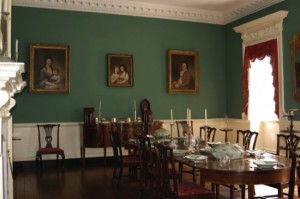
The dining room is not the only elaborate room in the house, and thanks to The Hammond-Harwood House Association’s careful attitude, most of the rooms in the house are available for viewing in a style reminiscent of the original one. The up-keep of the interior is fairly low maintenance, which is astonishing as most of the furnishings date to the late 18th and early 19th centuries.
Many of the original furnishings were sold in 1926, but St. John’s delegated finding these pieces to some of the nation’s finest collectors, like those at the American Wing of the Metropolitan Museum of Art. This nationwide search yielded profitable and priceless results: visitors can see original upholstered Chippendale chairs (in the living room), portraits, a Hepplewhite sewing table, and numerous artifacts that belonged to the original establishment. Additionally, nineteen pieces in the house were made by Annapolitan cabinet maker John Shaw, and are accurate of the time period.
Other rooms in the house authentically showcase the time period’s style and function. For instance, Titman showed us a bedroom, or as it is referred to now, the northeast chamber, which houses a massive canopy bed and would have been reserved for the lady of the house. Conversely, the study of the house was reserved for the man of the house. It hosts a pembroke table, simple fireplace, and a desk and bookshelf made by John Shaw. Several parlors–a large and small one–a game room, a bed chamber, a lower passage, a study chamber, a stair passage, and the kitchen comprise other components of the house. These components feature unique details, original parts, and when collectively studied, present a comprehensive peak into life in the Hammond-Harwood House.
The house was so influential and aesthetically pleasing during its early years that drawings of the house have been discovered in journals of Thomas Jefferson and Charles Willson Peale.
Not to be outdone by the interior, the garden also welcomes and inspires visitors. Though its not the four acreage garden with boxwoods and views of the Harbor it used to be, the backyard area with bushes that border the perimeter establish peacefulness there. Wooden benches line the edges and the brick wall built in 1982 is still standing. The garden is maintained by a garden club, comprised of volunteers. The garden club is not only responsible for the grounds, but also for putting on the Holiday Greens Show in early December (stay tuned for more information on this event).
Here’s one last peak into Hammond-Harwood House history: At its inception, the house sat on four acres and overlooked the William Paca House and Chase-Lloyd House. The property was one of the largest ones in Annapolis and was built as such to garner political and social authority. Contrast this image with the property’s reach today, which is just one under an acre. Houses and buildings now obstruct the view of the Paca house from the Hammond-Harwood House. It is for this reason that remembering Hammond-Harwood history is so valuable.
Perhaps you’d like your own tour of the property? Tours run only $7 for adults and $4 for children. Tours of the property move through most all rooms and last about fifty minutes. Currently, tours are offered Tuesday to Sunday, from noon to 4 p.m. Hours and days of touring change throughout the year, so check Hammond-Harwood House’s site to plan your trip. This site also offers parking suggestions and announcements of events.
We thank the Association and staff at Hammond-Harwood House for preserving its incredible history. Participate in a tour and learn more about the city you thought you knew.


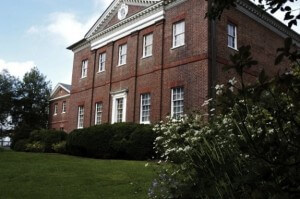
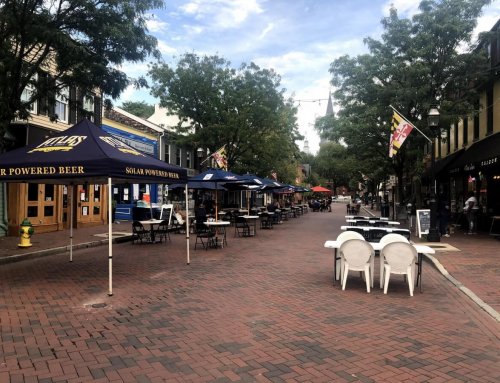
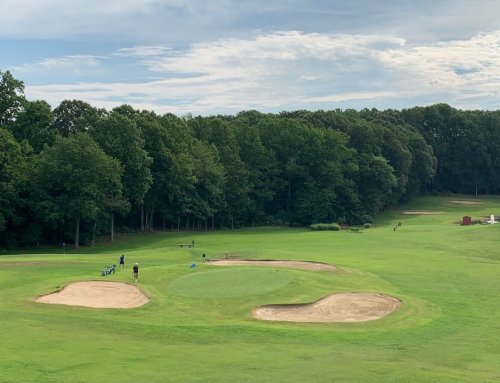
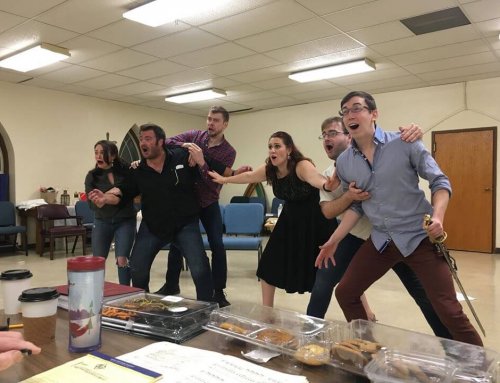
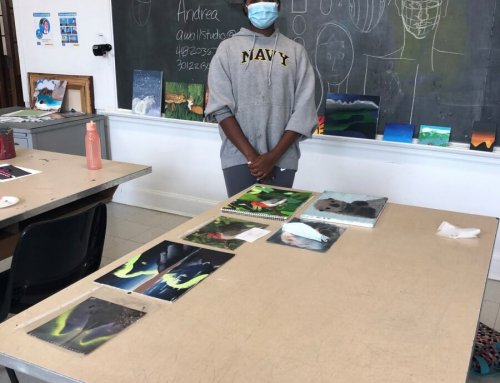
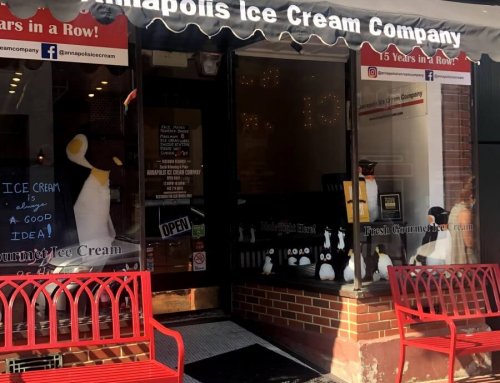
Leave A Comment